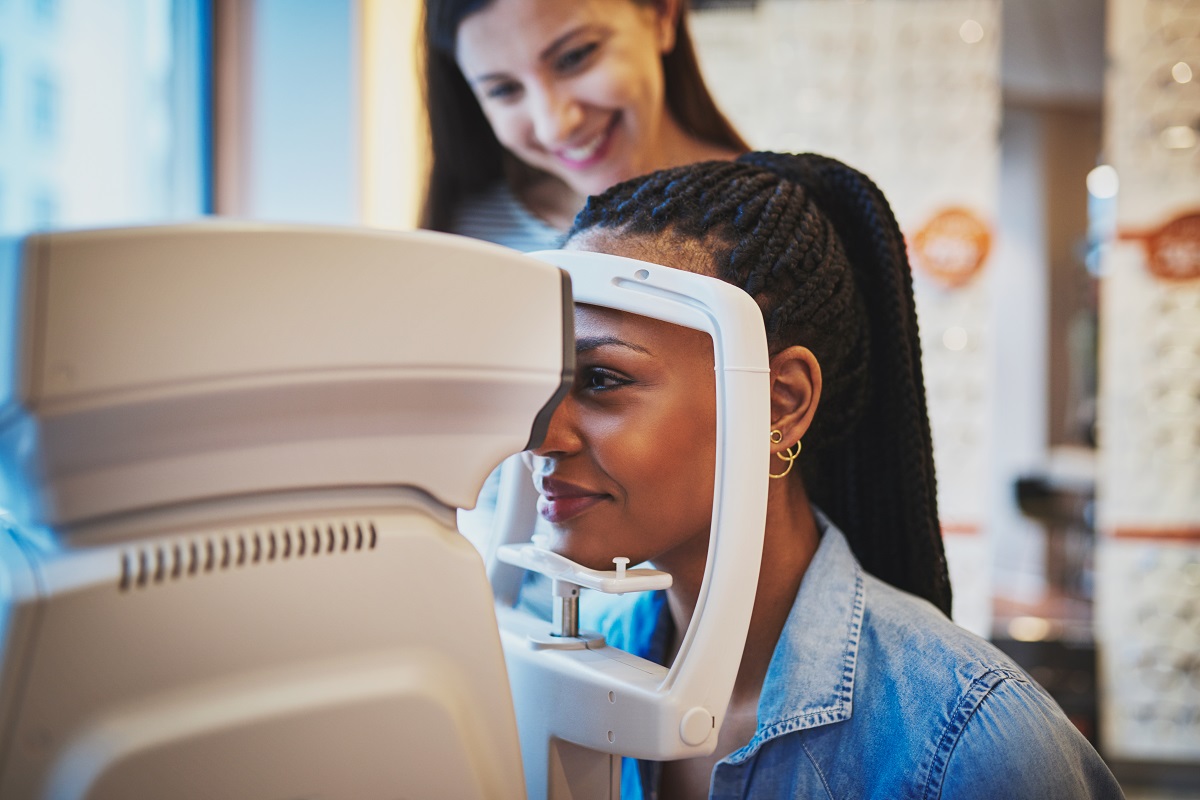What Happens During a Diabetic Eye Exam?
Submitted by Elman Retina Group on November 16, 2021

Did you know that November is Diabetic Eye Disease Awareness Month? Elman Retina Group joins eye care practices around the country in bringing attention to the importance of early detection and prompt intervention of diabetic eye disease. The longer diabetic eye disease goes undiagnosed/untreated, the more serious the implications on vision and ocular health.
A complete, dilated eye exam is the most reliable way to detect signs of diabetic eye disease early (when the disease is more easily managed). If you have diabetes, make sure to stay on top of scheduling these exams with our team.
What to Expect
Plan for your exam to take approximately one hour. During that time, a few things will occur.
Our doctors, along with their stellar team, will ask you about your medical history and your ocular health history. Be prepared to discuss any visual symptoms you are currently experiencing and when you noticed the onset of these symptoms. Also, be prepared to discuss the history of your diabetes, including when you were first diagnosed. The longer you have had diabetes, the greater the risk of diabetic eye disease.
You will be asked to read from an eye chart, which contains letters in different sizes, to check your vision. Please bring and wear your glasses for this, if applicable.
We will apply special drops to your eyes to numb and dilate your pupils, allowing our doctors a better look at the internal structures of your eyes. We will use a magnifying glass and light to thoroughly examine your retinas. Diabetic eye disease often affects the tiny blood vessels of the retina, so we will look for leaking, blockages, swelling or other abnormalities. We may take various photographs of your retina, if needed, using special non-contact camera machines. Afterwards, the doctor will examine your eyes and review your eye images with you on a big-screen TV monitor in the room (patients enjoy this part immensely).
Diabetes is believed to increase the risk of other eye diseases, such as glaucoma and cataracts, so we will look at the other parts of your eyes for warning signs.
After Your Diabetic Eye Exam
Depending on what we find during your exam, we may suggest additional tests to confirm or rule out problems. If we can conclusively say you have diabetic eye disease, we will explore your treatment options. We may need to coordinate with other members of your medical team, such as your endocrinologist, so you can get the best comprehensive multi-disciplinary care you need. Most importantly, our doctors believe that you — the patient — are a vital part of the planning, and you will be included in the decision-making process.
The dilating eye drops may make your eyes sensitive to light and your up-close vision blurry for several hours. Some patients plan to have someone drive them home after the appointment and rest until the effects of the drops wear off. Bring a pair of sunglasses for the ride home, or you can take a plastic pair from us during the checkout process.
How Often Should I Schedule Diabetic Eye Exams?
After your initial exam, we can advise of how frequently to schedule subsequent exams. Usually we recommend regular dilated diabetic eye exams once a year. This would need to be more often if there is retinopathy present.
If you have any questions about the steps of a diabetic eye disease, or you would like to schedule your next exam with our team, please call or email us today.



